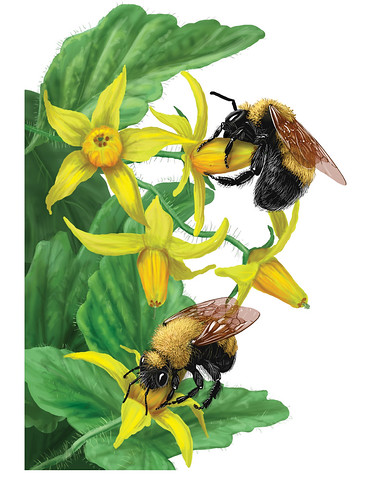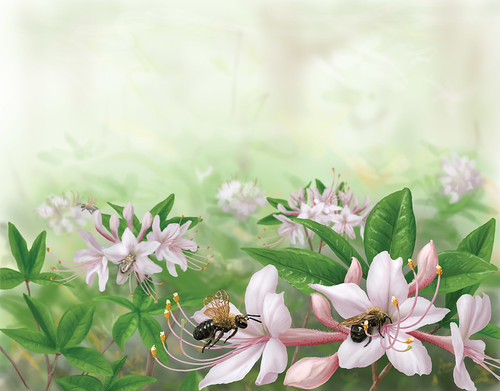
When I was a kid, there was one category for bees – “the stinging kind.” Fear of being stung wouldn’t allow me to consider variations among the swarms that patrolled playgrounds. The only thing that made bees tolerable was … the honey.
Youthfully ignorant, I didn’t know that there are thousands of bee species (and some bee species are stingless) or that those bees on the playgrounds were more life saving than threatening.
The USDA Forest Service, along with Pollinator Partnership, has produced a booklet called Bee Basics: An Introduction to our Native Bees to educate the public and encourage people to help protect these essential insects.
The 40-page booklet primarily focuses on bees native to North America, of which there are 4,000 species, found in forests, farms, cities, wildlands and deserts. Although honey bees may be most noted for producing honey, the booklet explains that native bees are valued for pollinating plants.

“Much of the produce we eat is pollinated by bees,” said Larry Stritch, a USDA Forest Service National Botanist. “They pollinate about 75 percent of the fruits and vegetables grown in the (United States) and 80 percent of flowering plants. Take away bees and you greatly decrease our food source and food for animals.”
According to “Bee Basics,” ground nesting bees provide food to wildlife and aerate and enrich soil.
The North American bumble bee, characterized by their relatively large, black, furry bodies and bright stripes, may be most familiar to Americans. There are about 50 species of bumble bees, which are important pollinators of tomatoes and clovers, a forage crop for cattle.
Bumble bees are among the Apidae family of bees, which also include native carpenter, squash and cuckoo bees, and nonnative stingless, orchid and honey bees.
Honey bees are the only natural source of honey that’s healthy for humans. Brought to America from Europe, honey bees don’t pollinate native plants as effectively as native bees.
Along with information about a variety of bees, “Bee Basics” also contains pages of glossy, color illustrations of bees and plants. The booklet’s key message warns of the threat to native-bee survival that is posed by pesticides, competition for nectar from honey bees, and environmental destruction.
To learn more about native bees, read “Bee Basics” on the Forest Service website.




